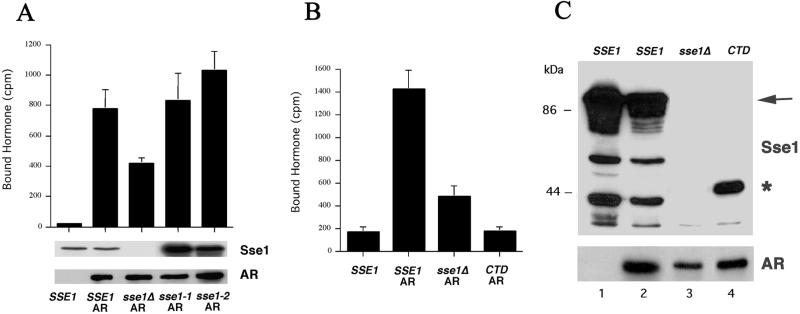Figure 6.
Sse1p mutants restore hormone binding to sse1Δ cells expressing androgen receptor. (A) Wild-type (SSE1) or sse1Δ mutant cells either lacking or containing the androgen receptor expression vector (AR) and/or galactose-inducible expression vectors for wild-type Sse1p (SSE1), or the Sse1-1 (sse1-1), Sse1-2 (sse1-2), or Sse1 CTD (CTD) proteins, or the vector lacking an insert (sse1Δ) were assayed for binding to synthetic hormone (R1881) as described in MATERIALS AND METHODS. Top, data represent the means of three independent determinations, ± SD. Bottom, immunoblot analyses using anti-Sse1p and anti-androgen receptor antisera. (B) In a separate experiment, the binding of hormone to sse1Δ cells expressing wild-type SSE1 or the Sse1p CTD was examined. Here, the CTD exerted a negative effect on hormone binding (binding was lower than in yeast lacking Sse1p). (C) An immunoblot of extracts from the strains used in B probed with anti-Sse1p (top) and anti-AR (bottom) antisera. The arrow indicates the migration of full-length Sse1p, and the asterisk denotes the position of Sse1p CTD.

